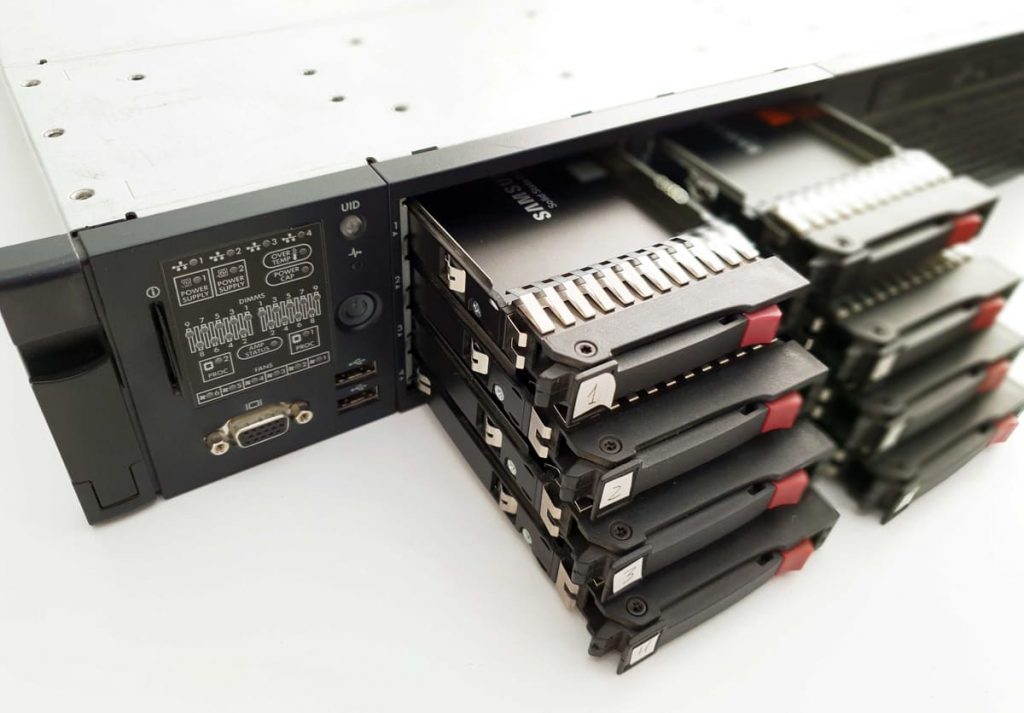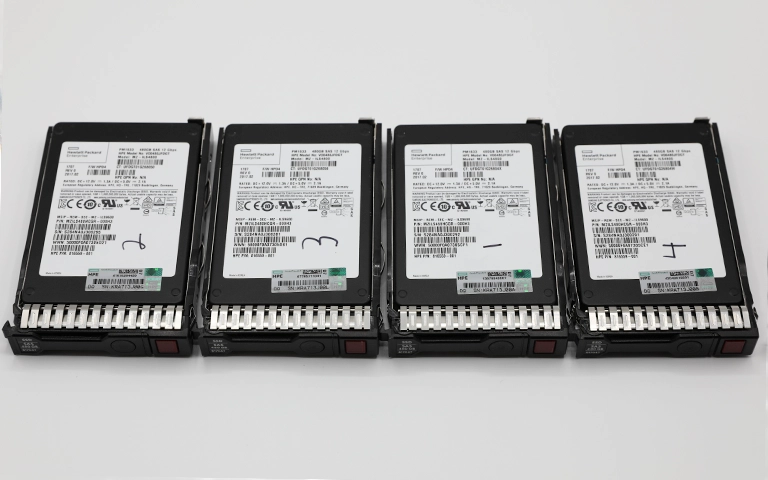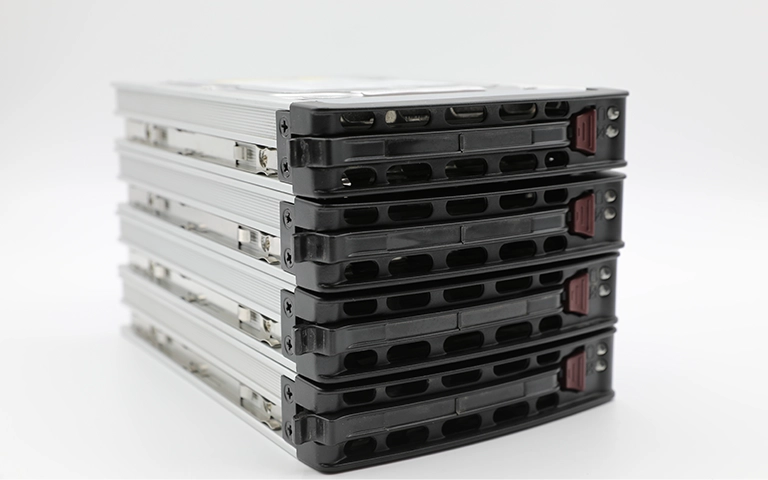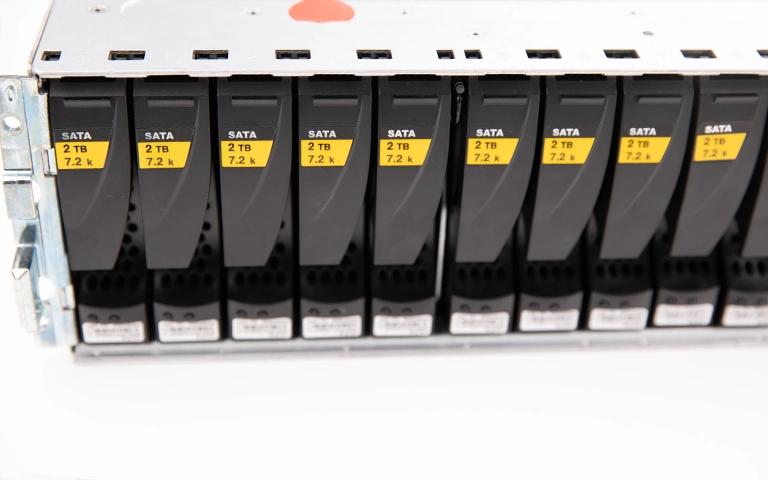When deciding between RAID 50 and RAID 60, the differences may look small but can have a big impact on your storage setup. Both are nested RAID levels that combine striping and parity, designed for speed, redundancy, and scalability.
RAID 50 focuses on performance and storage efficiency, while RAID 60 puts more emphasis on fault tolerance and data protection. The right choice depends on whether your priority is faster access or stronger redundancy.
In this blog, we explain how each configuration works, compare their strengths and weaknesses, and outline common use cases. By the end, you will have a clear view of which option fits your environment best.

How RAID 50 and RAID 60 Are Built
Both RAID 50 and RAID 60 are hybrid configurations that layer striping on top of parity-based arrays. The key difference lies in their foundations: RAID 50 uses RAID 5 groups, while RAID 60 uses RAID 6 groups.
If you’re not familiar with these, you can learn more about RAID 5 vs RAID 6 here.
RAID 50
This setup combines multiple RAID 5 groups and stripes data across them. Each group relies on single parity, which provides protection against one drive failure per group. The benefit is strong read and write performance with more efficient use of total capacity. The trade-off is that if two drives in the same group fail, the array will collapse.
RAID 60
RAID 60 is built from several RAID 6 groups striped together. Each group uses dual parity, meaning it can survive the loss of two drives within a group. This makes RAID 60 far more resilient during rebuilds or multiple failures. The drawback is higher overhead, as more drive space is reserved for parity, so usable storage is lower compared to RAID 50.
If you’d like professional assistance with recovery in either architecture, check out our RAID 50 Data Recovery service or RAID 60 Data Recovery service.
Performance in Real-World Use
Performance is often the deciding factor when comparing RAID 50 and RAID 60. Both use striping to boost speed, but parity requirements set them apart.
RAID 50
With single parity in each group, RAID 50 has less overhead. This results in faster read and write speeds, especially for large sequential workloads. It is well suited for applications that prioritise quick access to data without heavy redundancy requirements.
RAID 60
RAID 60 adds dual parity, which provides stronger protection but also increases processing work. This extra calculation can slow write speeds compared to RAID 50. Reads remain efficient, but overall throughput is lower.

When RAID 50 Is the Better Choice
High-speed data analysis and reporting
Environments with large sequential file transfers
Systems where usable capacity matters more than maximum redundancy
When RAID 60 Is the Better Choice
Mixed workloads with both reads and writes
Virtualisation environments with constant disk activity
Data that must remain online even during multiple drive failures

Reliability and Drive Failure Protection
The real strength of RAID 60 shows up when drives fail. Both RAID 50 and RAID 60 offer redundancy, but the level of protection differs.
In a RAID 50 setup, if a single drive in one RAID 5 group fails, the system continues running while the rebuild starts. But if a second drive in that same group fails before the rebuild finishes, the array collapses, and data is lost.
With RAID 60, each group has dual parity, so it can handle two drive failures without going offline. Even if two drives in one group fail during a rebuild, the array remains intact. This added layer of protection makes RAID 60 far safer in large storage pools where rebuilds can take days.
In short, RAID 50 delivers speed with limited protection, while RAID 60 is designed to survive harsher failure scenarios and reduce the risk of data loss during recovery.
Fast turnaround times for business-critical data
Capacity and Cost Considerations
RAID 50 and RAID 60 differ in how much usable storage remains after accounting for parity. Since RAID 50 relies on single parity in each group, less space is sacrificed compared to RAID 60. This makes it more storage-efficient, particularly with a limited number of drives.
For example, in a 12-drive array:
RAID 50 – only 2 drives’ worth of space is used for parity, leaving the capacity of 10 drives available for data.
RAID 60 – 4 drives’ worth of space is reserved for parity, leaving 8 drives for data.
This also affects cost. RAID 60 requires more drives to achieve the same usable space, increasing hardware expense. On the other hand, RAID 60 provides stronger protection, which many organisations consider worthwhile insurance against downtime.
Key tradeoffs to keep in mind:
RAID 50 is more cost-efficient and gives higher usable capacity.
RAID 60 is more expensive but provides extra redundancy.
To understand how parity impacts arrays, use our RAID Calculator.

Choosing Between RAID 50 and RAID 60
Deciding between RAID 50 and RAID 60 requires balancing performance, reliability, and cost.
If your priority is speed and storage efficiency, RAID 50 is the stronger option. It uses fewer drives for parity, which reduces costs and maximises usable capacity. The trade-off is lower protection against multiple drive failures.
If your priority is reliability and uptime, RAID 60 is the safer choice. Its dual parity structure makes it far more resilient during rebuilds, especially in large arrays. The drawback is higher cost and less usable storage.
In short:
Choose RAID 50 if performance and cost efficiency matter most.
Choose RAID 60 if fault tolerance and data safety outweigh budget concerns.
Both configurations are powerful, but the right choice depends on balancing risk, speed, and investment.
Final Thoughts and Professional Guidance
RAID 50 and RAID 60 both deliver strong performance and redundancy, but they are designed with different priorities. RAID 50 offers faster speeds and more usable capacity, while RAID 60 provides stronger fault tolerance and protection against multiple drive failures. The best choice depends on your balance of performance needs, reliability requirements, and budget.
However, no RAID system is risk-free. Drive failures, rebuild errors, or unexpected issues can still cause data loss. In such cases, working with specialists who understand the complexity of nested RAID arrays is critical.
At RAID Recovery Services, we specialise in recovering data from RAID 50 and RAID 60 systems, whether the issue is hardware failure, rebuild errors, or multiple drive loss. If you face a RAID failure, our engineers can help you restore access to your data quickly and safely. Request help here.

Trust the experts with proven results
Frequently Asked Questions
What is the main difference between RAID 50 and RAID 60?
RAID 50 is built on RAID 5 groups with single parity, while RAID 60 uses RAID 6 groups with dual parity. RAID 50 offers faster performance and higher usable capacity, but RAID 60 provides stronger fault tolerance and can survive more drive failures.
Which is faster, RAID 50 or RAID 60?
RAID 50 is generally faster, especially for write operations, because it only requires single parity calculations. RAID 60 has more overhead from dual parity, which can reduce write speeds, although read speeds remain efficient.
How many drives are required for RAID 50 and RAID 60?
RAID 50 requires at least 6 drives, arranged in two groups of three. RAID 60 requires at least 8 drives, arranged in two groups of four. Larger arrays are common for both to balance performance and redundancy.
Which RAID level is safer for large storage arrays?
RAID 60 is safer because each group can handle up to two drive failures. This makes it more reliable for large-capacity arrays where rebuild times are long and the chance of multiple failures is higher.